Successful launch of three Compass (Beidou-2) satellites so far this year and reports of another two planned later in 2010 have elevated awareness of China’s accelerating GNSS program.
Added to the two spacecraft placed in orbit in 2007 and 2009, that would bring the modernized Beidou constellation up to seven — halfway to the 13 or 14 satellites planned for the regional system scheduled to be available by 2012.
By Inside GNSS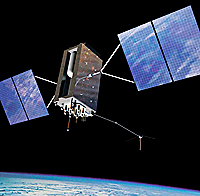 Artist’s rendering of GPS III satellite. Lockheed Martin image
Artist’s rendering of GPS III satellite. Lockheed Martin imageMore than two years into a multi-billion-dollar contract, the Lockheed Martin team developing the U.S. Air Force’s next-generation GPS Block III satellites continues to defy the physics of large aerospace programs by successfully completing the program’s Critical Design Review (CDR) phase last week — two months ahead of the baseline schedule.
By Inside GNSS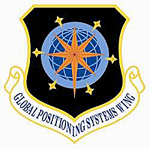
The GPS Wing has authorized publication of three technical documents with updated specifications for the U.S. Global Positioning System, including the next-generation GPS Block IIIA satellites now in development, the L5 radio link, and the new L1 civil signal (L1C) that will be available with the GPS III spacecraft.
By Inside GNSS
GPS-related procurement and development items in President Obama’s proposed budget for fiscal year 2011 are moving through Capitol Hill, but not without contention. At issue is Obama’s request for $40.9 million for the High-Integrity Global Position System (HIGPS, also known as iGPS).
By Inside GNSSIn recent years, researchers have explored possible new allocations for Radio Determination Satellite Service (RDSS) and Radio Navigation Satellite Service (RNSS) spectrum from a regulatory point of view. These studies have mainly discussed S-band and C-band in addition to L-band.
The International Telecommunications Union (ITU) Radio Regulations define RNSS as a subset of RDSS. Although the allocations are differentiated — RDSS usually has a paired uplink — both can actually be used for satellite navigation.
By Inside GNSS
Map Africa 2010 conference and exhibition will take place at the Cape Town International Convention Centre (CTICC) in the center of Cape Town, South Africa on November 23-25, 2010.
The theme is "Geospatial Readiness for Building Africa." The conference will focus on the most pressing areas that contribute to the nation’s growth, such as infrastructure and utilities, cadastral mapping, land information management system (LIS), land policies, mining and exploration and emergency management.
By Inside GNSS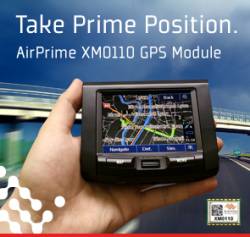
Sierra Wireless, headquartered in Richmond, British Columbia, Canada, has announced the availability of a new GPS module and supporting software, optimized for wireless applications based on Sierra Wireless AirPrime Intelligent Embedded Modules.
The new AirPrime XM0110 GPS Module is based on integrated SiRFstarIV GPS technology from CSR plc, and an OEM design optimized for wireless asset tracking and automotive applications.
By Inside GNSS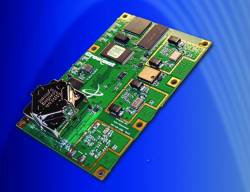
Hemisphere GPS has announced its Crescent Vector II OEM board and a series of related Crescent Vector II GPS compass products.
The new OEM board, targeted for system integrators, brings a series of new features to the company’s patented Crescent receiver technology, including heave, pitch, and roll output; more accurate timing, lower phase noise, and an improved accelerometer.
The Crescent Vector II design provides precise heading and positioning accuracy even while a mobile platform is motionless.
By Inside GNSSKVH Industries, Inc., has introduced its new CG-5100 inertial measurement unit (IMU), which combines KVH fiber optic gyros (FOGs) and microelectro-mechanical system (MEMS) accelerometers to measure roll, pitch, and yaw angular rates and accelerations.
The CG-5100 is designed for stabilization, navigation, and autonomous vehicle applications requiring precision position, velocity, and attitude sensing capabilities, dependable backup for GPS in dynamic conditions or when GPS is unavailable.
By Inside GNSS Danny Kim, iSuppli
Danny Kim, iSuppli[Reprinted with permission from NAVIBIZ, Issue Date: 2010-3-26]
By Inside GNSS[Reprinted with permission NAVIBIZ, Issue Date: 2010-6-7]
China is building up its global satellite navigation system BeiDou (COMPASS) that is intended to cover the world by 2020. That’s the word from the country’s first Satellite Navigation Conference, in Beijing. Developed and operated by China, BeiDou is designed to provide accurate real-time military and civil service to national security, social and economic development.
By Inside GNSS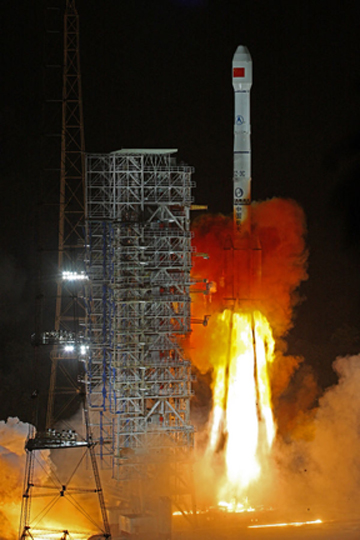 A Compass/Beidou-2 geostationary satellite is lifted into space from China’s Xichang space center. (China Academy of Launch Vehicle Technology photo)
A Compass/Beidou-2 geostationary satellite is lifted into space from China’s Xichang space center. (China Academy of Launch Vehicle Technology photo) [Reprinted with permission from NAVIBIZ, Issue Date: 2010-6-18]
At 23:53 on June 2, China successfully launched the 4th BeiDou navigational satellite into the pre-designated orbit with the "Long March 3C" carrier rocket at the Xichang Satellite Launch Center, symbolizing that China has made another important step forward in building the BeiDou (COMPASS) Navigation Satellite System. The construction of COMPASS follows the principles of openness, independency, compatibility, and gradualness.
By Inside GNSS